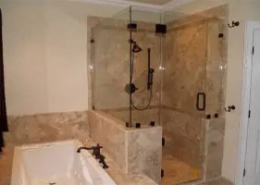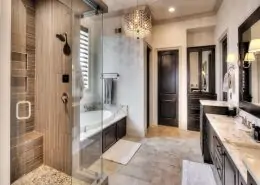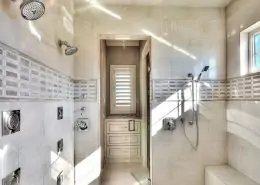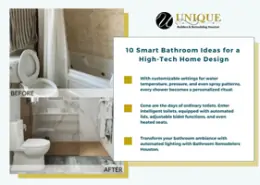How to Vent a Bathroom with No Outside Access
Tags
How To Vent A Bathroom Fan | Venting A Bathroom | How To Install A Bathroom Vent
In order to maintain a healthy indoor environment, prevent the formation of mold and mildew, and get rid of bad odors, knowing how to vent a bathroom properly is essential.
The majority of the time, restrooms have exhaust fans that vent outside, guaranteeing effective air circulation.
There are, however, some circumstances when it is not possible to construct an exhaust duct to the outside due to architectural limitations, such as restrooms that are located in the middle of a building or flats that have limited exterior wall access.
Finding alternate strategies for ventilating a restroom without outside access becomes necessary in such circumstances. This thorough article will go through a number of ways to adequately ventilate your bathroom even if external venting is not an option.
Understanding the Importance of Bathroom Ventilation
Before delving into the methods of venting a bathroom with no outside access, it’s essential to understand why bathroom ventilation is crucial.
-
Moisture Control
Showers, baths, and sinks produce a lot of steam and humidity, making bathrooms high-moisture spaces.
The removal of excess moisture by good ventilation helps to avoid the growth of mold and mildew, which may be dangerous to your health and destructive to your property.
-
Elimination of odors
After use, bathrooms might emit obnoxious odors. These scents are rapidly removed from a bathroom with good ventilation, leaving it pleasant and fresh.
-
Air Quality
By lowering the quantity of airborne pollutants and toxins, adequate ventilation improves indoor air quality and fosters a healthier living environment.
A bathroom with too much moisture can harm the paint, drywall, and fixtures, necessitating expensive repairs and renovations. Bathroom materials have a longer lifespan when they are properly ventilated.
-
Preventing Damage
Excess moisture in the bathroom can damage paint, drywall, and fixtures, leading to costly repairs and renovations. Proper ventilation helps extend the lifespan of bathroom materials.
Simple Ways to Vent a Windowless Bathroom
When traditional outside venting is not an option, there are several alternative methods to effectively ventilate your bathroom.
Here are some practical solutions:
1. Use a Recirculating Exhaust Fan
The installation of a recirculating exhaust fan is one of the easiest ways to vent a bathroom without an exterior exit.
Recirculating fans filter the air via a set of charcoal or HEPA filters before releasing it back into the bathroom, in contrast to ordinary exhaust fans, which exhaust air outside.
Although these fans don’t completely eliminate moisture or scents from the house, they can greatly enhance indoor air quality and lower humidity levels.
Installation: Mount the bathroom’s ceiling or wall with the recirculating exhaust fan, ideally close to the source of moisture, such as the shower or bathtub. Ensure correct electrical wiring and adhere to the installation guidelines provided by the manufacturer.
Maintenance: Regularly clean or replace the filters to maintain the fan’s effectiveness. Depending on usage, filters may need replacement every six months to a year.
2. Use a Dehumidifier
Using a dehumidifier is another smart technique to control moisture and enhance bathroom airflow.
Dehumidifiers are devices made to take out extra moisture from the air, helping to keep the humidity in the bathroom at the ideal level.
Installation: Put the dehumidifier in a practical spot inside the bathroom, preferably close to the source of the moisture. Make sure it has adequate drainage options and is connected to a power source.
Maintenance: Regularly drain the water tank or install a system of continuous drainage. Follow the manufacturer’s directions when cleaning the unit’s filters.
3. Install a Ductless Mini-Split System
Consider installing a ductless mini-split system in your bathroom if you are prepared to make a larger investment.
These systems provide effective ventilation while also having heating and cooling capabilities. They are made up of an outside condenser and an indoor air handling unit that are connected by a refrigerant line.
Installation: To choose the ideal position for the indoor air handling unit, speak with a qualified HVAC specialist. Even if it involves some inventive construction, make sure the outdoor condenser is put in the proper location outside.
Maintenance: Keep the mini-split system clean and maintained on a regular basis to ensure effective performance and an increase in the air quality.
4. Use a Window Fan
A window fan can provide efficient ventilation in bathrooms that have windows that are easily accessible.
Window fans are made to fit in window frames and, depending on where they are placed, can either bring fresh air into the bathroom or exhaust stale air outside.
Installation: Install the window fan in a bathroom window, making sure to fasten it firmly. For ease of use, several versions have remote controls or timers.
Maintenance: To minimize dust accumulation and ensure effective airflow, clean the fan housing and blades frequently.
Install an In-Line Fan with a Charcoal Filter
To eliminate odors and enhance air quality, an in-line fan with a charcoal filter can be put in the bathroom’s ducting.
These fans might be a great option for restrooms with restricted access to the outside because they are often quieter than conventional exhaust fans.
Installation: To install the in-line fan in the bathroom ductwork, contact a professional. For the best odor removal, put the charcoal filter in the ductwork at a handy spot.
Maintenance: As directed by the manufacturer, clean or replace the charcoal filter.
6. Create a Passive Ventilation System
Natural airflow is used by passive ventilation systems to enhance bathroom ventilation.
The toilets in the middle of a building benefit the most from this technique. It entails making holes in the bathroom’s doors or walls to allow air to easily circulate between spaces.
Installation: To choose the optimal spots for airflow holes, speak with a contractor or architect. These could be wall vents that lead to adjacent rooms or corridors, transom windows above the door, or vents in the bathroom door.
Maintenance: To ensure proper ventilation, make sure the holes are kept clear and clean.
7. Use Portable Air Purifiers
Portable air purifiers with HEPA filters can assist enhance indoor air quality in a bathroom without access to the outside world even if they are not ventilation systems per se.
These gadgets are efficient in removing odors, allergies, and airborne particles.
Placement: Put the air purifier in the bathroom, preferably close to where the smells or dampness are coming from.
Maintenance: As directed by the manufacturer, regularly clean or replace the HEPA filters.
Unlocking Fresh Air With Unique Builders & Development Inc
When it comes to venting a bathroom with no outside access, Unique Builders & Development Inc. should be your top choice. With years of experience in the construction and remodeling industry, our team is well-versed in the intricacies of creating effective ventilation solutions for bathrooms in challenging locations.
Our comprehensive guide not only offers a step-by-step approach to tackling this common issue but also incorporates innovative and unique solutions tailored to your specific needs.
We understand the importance of proper ventilation for maintaining indoor air quality and preventing moisture-related problems.
With Unique Builders & Development Inc., you can trust that your bathroom remodeling needs will be met with expertise, precision, and a commitment to ensuring your space is both functional and aesthetically pleasing.
Conclusion
It might be necessary to use some ingenuity and be open to trying out different approaches in order to ventilate a bathroom without outside access.
Whether you choose a dehumidifier, ductless mini-split system, recirculating exhaust fan, or a mix of these, the objective is to maintain a healthy interior atmosphere and avoid moisture-related problems. It’s crucial to select the approach that best fits your demands, requirements, and bathroom layout.
To guarantee that these systems continue to function well and deliver the intended air quality benefits, routine maintenance is essential.
Even in circumstances when outdoor venting is impractical, you can make your home more pleasant and healthful for you and your family by taking the time to address bathroom ventilation efficiently.






















